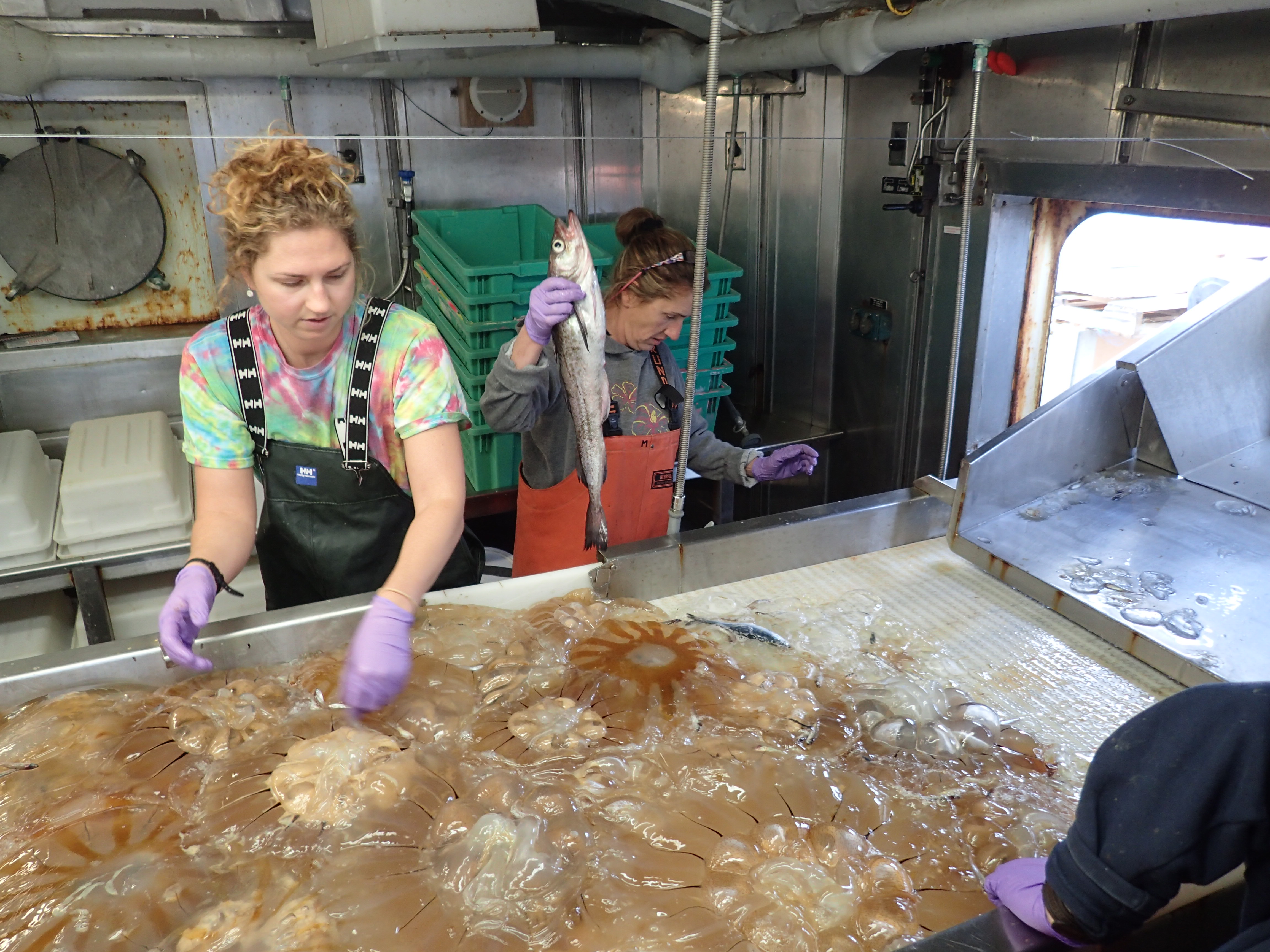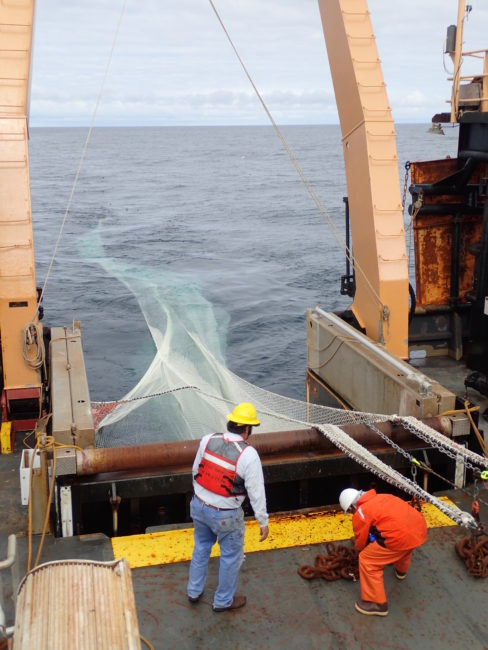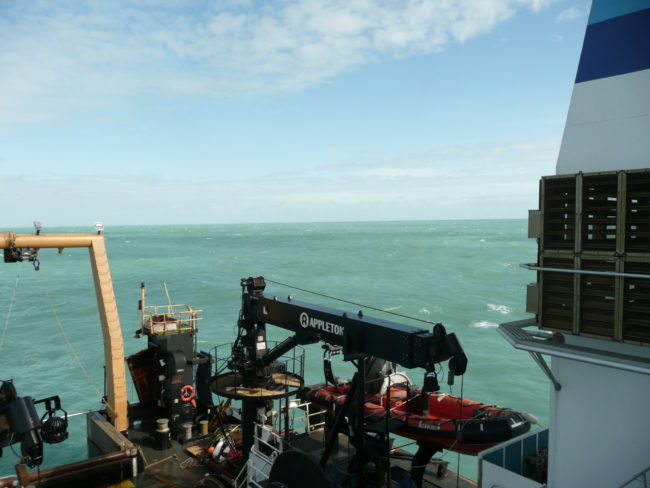
On Tuesday, researchers wrapped up a month-long cruise through the unusually warm waters of the Bering Sea. They’re investigating how the second year of a warming pattern is affecting the ecosystem, including the nation’s largest fishery, pollock.
Onboard the research vessel Oscar Dyson, a dozen scientists have been trading 12-hour shifts as the ship traced a grid over the eastern Bering Sea Shelf from Unimak Island up to about 60 degrees north.
Janet Duffy-Anderson is a research biologist with NOAA’s Alaska Fisheries Centers. Her co-lead on the Bering Sea project is Phyllis Stabeno, an oceanographer at NOAA’s Pacific Marine Environmental Laboratory.
Stabeno explains at each stop, the ship’s researchers take both physical measurements — temperature, salinity, nutrients – and biological samples.
“So you pull in your last net, fish and everything comes in and you begin sorting them,” she says. “But the ship now is moving to the next station, takes about 2-3 hours to get to the next station. … So everybody is madly running all their samples so they can be ready to do this again.”

The goal of this daily hustle is to study the effects of an unusual phenomenon in the Bering Sea: Last year the waters warmed dramatically after a 7-year cold spell.
This sudden warming bodes ill for some species, including walleye pollock. Duffy-Anderson says the last time there was an extended warm spell was between 2001 and 2006, and it was a very poor period for pollock.
The poor pollock return, she says, is due to a deficiency in the fish’s food source. During warm years the plankton, or copepods, that pollock eat are not as fatty and nutritious as plankton during cold years.
“And what we see is the fishes that eat that prey base are also in worse condition in warm years than in cold years. They’re not getting this high-fat diet. They’re getting kinda more like a potato chip diet, I guess,” she says.
Duffy-Anderson says this skimpy warm-weather diet results in skinny pollock that have a hard time surviving the following winter.
In contrast, pollock during a cold spell are eating fat-rich plankton.
“And so by the end of the summer they’re short and fat and they can make it through the winter much more successfully than the long-skinny guys in warm years,” she says.
Duffy-Anderson says the warm years cause another disturbing trend: an increase in cannibalism among pollock.
“In the warm years, when the nutrient base is poor, they go after each other. A drop in pollock survival may be the biggest economic impact of this new warm spell,” she says. “But these scientists say the changes go much deeper than a single species.”

Stabeno says historically, Bering Sea temperatures would fluctuate randomly from year to year – a warm year, followed by a cold, followed by a medium year and so on.
But over the last 15 years, those brief highs and lows have stretched out into five, six or even seven-year periods. Stabeno says this could signal a big change in the region’s climate patterns.
“The Bering Sea shifted from this high year-to-year variability to a more stanza – where you have groups of warm and groups of cold, which would have profound impacts on the ecosystem if it happens,” Stabeno says. “And we don’t know … is this a random occurrence? Statistically, it’s looking less and less like it.”
With the warm mass of Pacific water known as the Blob and El Niño in the forecast, continued warm conditions are expected.
The Oscar Dyson completed its Bering Sea cruise and returned to Dutch Harbor on Tuesday. Duffy-Anderson and Stabeno say a “snapshot” of data will be provided to NOAA fisheries managers and the North Pacific Management Council within a month.
A more thorough analysis of the data will be released in about a year.
